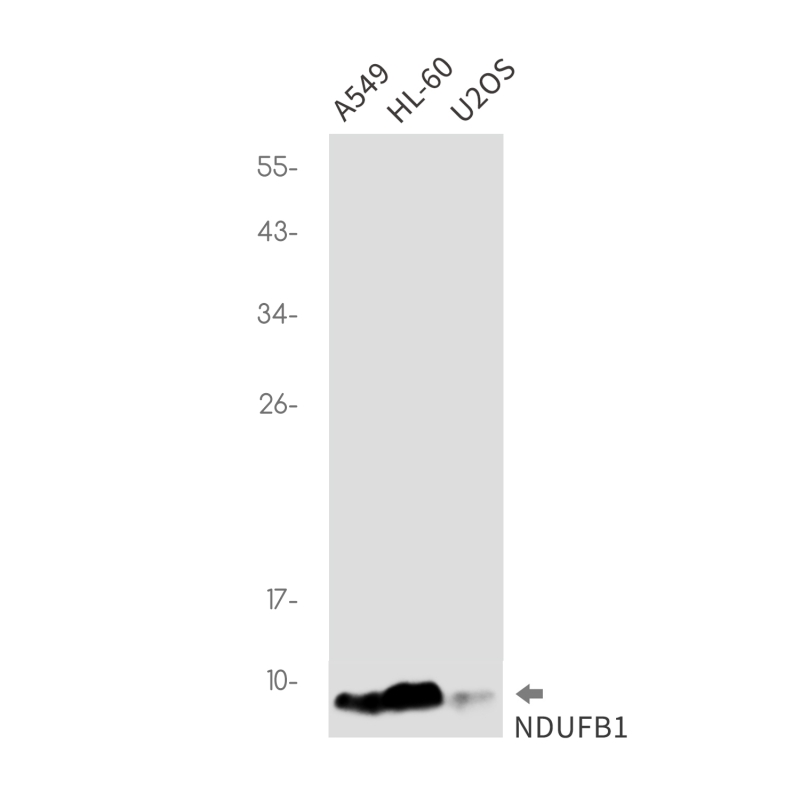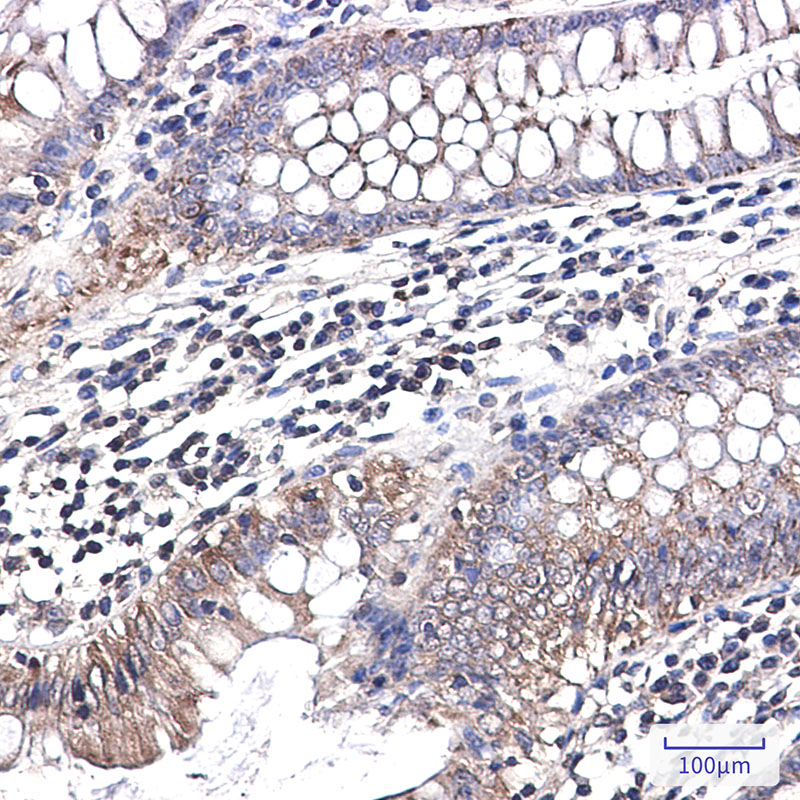

| WB | 1/500-1/1000 | Human,Mouse,Rat |
| IF | 咨询技术 | Human,Mouse,Rat |
| IHC | 1/50-1/100 | Human,Mouse,Rat |
| ICC | 技术咨询 | Human,Mouse,Rat |
| FCM | 咨询技术 | Human,Mouse,Rat |
| Elisa | 咨询技术 | Human,Mouse,Rat |
| Aliases | MNLL; CI-MNLL; CI-SGDH |
| Entrez GeneID | 4707 |
| WB Predicted band size | Calculated MW: 7 kDa; Observed MW: 7 kDa |
| Host/Isotype | Rabbit IgG |
| Antibody Type | Primary antibody |
| Storage | Store at 4°C short term. Aliquot and store at -20°C long term. Avoid freeze/thaw cycles. |
| Species Reactivity | Human |
| Immunogen | Recombinant protein of human NDUFB1 |
| Formulation | Purified antibody in TBS with 0.05% sodium azide,0.05%BSA and 50% glycerol. |
+ +
以下是关于NDUFB1抗体的3篇参考文献,按文献名称、作者和摘要内容概括整理:
1. **《NDUFB1 mutations cause mitochondrial complex I-linked Leigh syndrome by impairing protein stability》**
- **作者**:Alston CL 等
- **摘要**:该研究通过全外显子测序发现NDUFB1基因突变与线粒体复合物I缺陷相关。研究利用NDUFB1抗体进行免疫印迹分析,证实突变导致蛋白稳定性下降,进而引发Leigh综合征的线粒体能量代谢障碍。
2. **《Proteomic analysis of mitochondrial complex I subunits reveals deregulation in colorectal cancer》**
- **作者**:Ferreira CR 等
- **摘要**:通过蛋白质组学技术结合NDUFB1抗体检测,发现结直肠癌组织中NDUFB1表达显著下调,提示其可能作为线粒体功能失调和癌症进展的生物标志物。
3. **《Antibody-based profiling of mitochondrial respiratory chain complexes in Parkinson’s disease》**
- **作者**:Zheng B 等
- **摘要**:研究使用多种线粒体复合物特异性抗体(包括NDUFB1)分析帕金森病患者脑组织样本,发现复合物I亚基表达异常,表明其与神经退行性病变的潜在关联。
如需具体DOI或发表年份,可进一步补充检索条件。
NDUFB1 (NADH:ubiquinone oxidoreductase subunit B1) is a critical component of mitochondrial Complex I, the largest enzyme in the electron transport chain responsible for oxidative phosphorylation. As part of the hydrophobic protein cluster within Complex I, NDUFB1 contributes to the structural integrity and catalytic activity of the enzyme, facilitating electron transfer from NADH to ubiquinone and supporting ATP production. Dysregulation of NDUFB1 has been implicated in mitochondrial disorders, neurodegenerative diseases, and cancer, making it a key target for studying metabolic dysfunction.
Antibodies against NDUFB1 are widely used as research tools to investigate Complex I assembly, mitochondrial bioenergetics, and disease mechanisms. They enable detection and quantification of NDUFB1 protein levels via techniques like Western blotting, immunofluorescence, and immunohistochemistry. Specificity validation, including knockdown/knockout controls, is essential due to potential cross-reactivity with other Complex I subunits. Commercial NDUFB1 antibodies are typically raised in rabbits or mice using synthetic peptides or recombinant protein fragments. Applications extend to studying conditions like Leigh syndrome, Parkinson’s disease, and tumors with altered metabolic profiles. Recent studies also explore its role in aging and apoptosis. Researchers often pair these antibodies with mitochondrial fractionation or blue native electrophoresis to assess Complex I integrity in disease models.
×